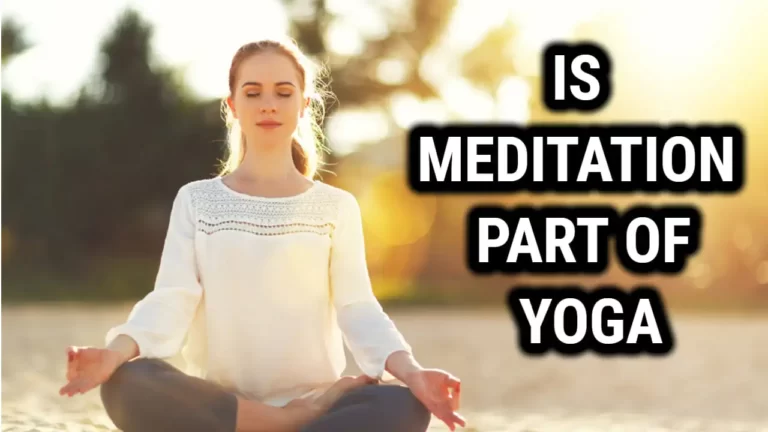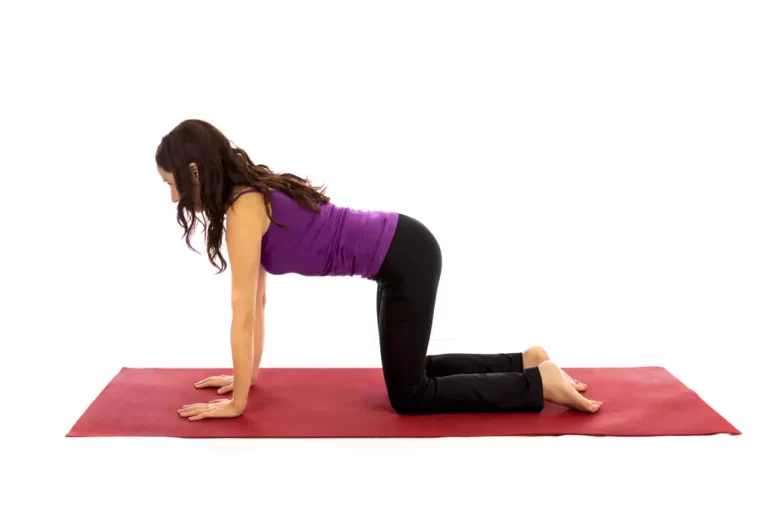Beginner Yoga For Runners: How to Improve Flexibility, Strength, and Focus

If you’re a runner looking to enhance your performance and reduce the risk of injury, practicing yoga is an excellent choice. Yoga is a low-impact activity that can help runners build strength, flexibility, and endurance, while also improving their mental focus and reducing stress levels.
In this article, we’ll explore the benefits of yoga for runners and provide you with a guide to basic yoga poses that you can incorporate into your running routine. We’ll also cover the importance of proper alignment in yoga poses, and offer some tips on how to fit yoga into your busy life schedule.
Benefits of Yoga for Runners
Yoga is a amazing way for runners to improve their performance, reduce the risk of injury, and boost their overall health and well-being. Here are some of the best and wonderful benefits of practicing yoga for runners:
Improved flexibility and range of motion
As runners, we tend to focus on cardio and strength training, often neglecting our flexibility. However, tight muscles and limited range of motion can lead to imbalances in your body, which can result in injuries over time. Yoga can help to improve your flexibility and range of motion, which can make you a more efficient and injury-resistant runner.
Increased strength and stability
In addition to flexibility, yoga can also help to build strength and stability in the body. Many yoga poses require you to hold yourself in difficult positions, which can help to build endurance and muscular strength. Stronger muscles can help you to maintain proper form while running, reducing the risk of injury.
Enhanced breathing techniques
One of the most important aspects of yoga is breath work. By learning to control your breath, you can increase your lung capacity and oxygen intake, which can benefit your running performance. In addition, learning to breathe deeply and mindfully can aid to reduce stress and anxiety, which makes you focus more effectively on your running goals.
Reduced stress and improved mental focus
Yoga is a wonderful way to reduce stress and promote mental well-being. By practicing yoga regularly, you can learn to quiet your mind and focus on the present moment. This can aid to reduce anxiety and improve your overall mental health, making you a happier and more focused runner.
Basic Yoga Poses for Runners
If you’re new to yoga, it can be challenging to know where to start. Here are some basic yoga poses(asanas) that are great for runners:
Downward-Facing Dog
This simple and classic yoga pose is a great way to stretch out the hamstrings, calves, and spine. To perform downward-facing dog:
- Begin on your hands and knees, with your hands under your shoulders and your knees directly under your hips.
- Press your hands firmly into the ground, tuck your toes under, and lift your hips up and back, coming into an inverted V-shape.
- Keep your head and neck relaxed, and press your heels towards the ground.
- Hold the pose for 5-10 deep breaths.
Warrior I
Warrior I is a powerful pose that can help to strengthen the legs, hips, and core. To perform warrior I:
- Start in a lunge pose, with your right foot forward and your left foot back.
- Rotate your left foot 45 degrees outwards, so that your left heel is aligned with the arch of your right foot.
- Inhale and raise your arms overhead, with your palms facing each other.
- Exhale and bend your right knee, keeping it directly over your ankle.
- Hold the pose for 7-12 deep breaths, then repeat on the other side.
Warrior II
Warrior II is another powerful pose that can help to strengthen the legs, hips, and core, while also improving your balance and focus. To perform warrior II:
- Start in a lunge pose, with your right foot forward and your left foot back.
- Rotate your left foot 90 degrees outwards, so that your left heel is aligned with the arch of your right foot.
- Inhale and raise your arms to shoulder height, with your palms facing down.
- Exhale and bend your right knee, keeping it directly over your ankle.
- Turn your head to look above your right hand.
- Hold the pose for 6-12 deep breaths, then repeat on the other side.
Triangle Pose
Triangle pose is a great way to stretch out the hamstrings, hips, and spine, while also strengthening the legs and core. To perform triangle pose:
- Start in a wide-legged stance, with your feet about 3-4 feet apart.
- Turn your left foot 90 degrees outwards, and your right foot slightly inwards.
- Inhale and raise your arms to shoulder height, with your palms facing down.
- Exhale and hinge forward from your hips, reaching your left hand towards your left foot.
- Keep your right arm extended upwards, and gaze up towards your right hand.
- Hold the pose for 7-12 deep breaths, then repeat on the other side.
Pigeon Pose
Pigeon pose is a wonderful way to stretch out the hips and glutes, which can become tight from running. To perform pigeon pose:
- Begin this in a high plank position, with your hands directly under your shoulders.
- Keep your right knee forward and place it behind your right wrist.
- Extend your left leg from behind you, keeping your hips level.
- Lower your torso towards the ground, using your arms to support yourself.
- Hold the pose for 7-12 deep breaths, then repeat on the other side.
Importance of Proper Alignment in Yoga Poses
Proper alignment is essential in yoga to prevent injury and get the most benefit from each pose. Here are some tips for achieving proper alignment in yoga poses:
- Start with a strong foundation. Make sure your feet, hands, or any other points of contact with the ground are placed firmly and evenly.
- Engage your core. By engaging your core muscles, you’ll create more stability and prevent injury to your lower back.
- Keep your spine straight. In most yoga poses, it’s important to maintain a straight spine to avoid unnecessary strain.
- Move with your breath. Inhale to lengthen and expand, and exhale to deepen the pose.
- Listen to your body. Never push yourself beyond your limits or ignore any pain or discomfort.
Incorporating Yoga into Your Running Routine
If you’re a busy runner, finding time to practice yoga can be challenging. Here are some wonderful tips for fitting yoga into your schedule:
- Set a regular practice time. Try to practice yoga at the same time each day to establish a routine.
- Combine yoga and running. You can perform a short yoga practice before or after your run to warm up or cool down.
- Take advantage of online classes. There are many free or low-cost online yoga classes available that you can do from home.
- Practice self-care. One should make yoga a part of your self-care routine and prioritize your health and well-being.
Precautions for Beginners
While yoga can be a safe and beneficial activity for runners, it’s important to take precautions as a beginner. Here are some easy tips to keep in mind:
- Start slowly. Don’t push yourself too hard or try to perform advanced poses before you’re ready.
- Listen to yourself and stop if you feel any pain or discomfort.
- Work with a qualified instructor. A good yoga instructor can help you learn proper alignment and prevent injury.
- Use props. Blocks, straps, and blankets can help you modify poses and make them more accessible.
- Don’t compare yourself to others. Yoga is a personal practice, and everyone’s body is different.
- Stay hydrated. Make sure to drink lots of water before, during, and after your yoga practice.
FAQ’s
Q: Can yoga replace stretching before running?
A: While yoga can be a great way to warm up before a run, it’s important to incorporate stretching specific to the muscles you’ll be using during your run. Dynamic stretching, such as leg swings and lunges, can be a great addition to a pre-run routine.
Q: Is yoga safe for runners with injuries?
A: It depends on the injury and the severity. In some cases, yoga can actually help prevent and heal injuries. However, it’s important to work with a qualified instructor and modify poses as needed to avoid exacerbating an existing injury.
Q: How often should I incorporate yoga into my running routine?
A: This varies depending on your personal schedule and goals. However, incorporating yoga 1-2 times per week can be a great way to improve your running performance and prevent injury.
Q: Do I need any special equipment to practice yoga as a runner?
A: While a yoga mat is helpful, it’s not necessary. Blocks, straps, and blankets can be helpful props, but they can also be substituted with household items like books and towels.
Q: Can yoga help with mental health for runners?
A: Yes, yoga has been shown to have numerous mental health benefits, including reducing stress and anxiety, promoting relaxation, and improving mood. Incorporating a regular yoga practice into your running routine can help improve your overall sense of well-being.
Final Words
Adding yoga into your running routine can be a game-changer for your physical and mental stability. Not only can yoga help prevent injury and improve your running performance, but it can also help reduce stress, improve your flexibility, and increase your overall sense of well-being. By starting slowly, working with a qualified instructor, and practicing proper alignment, you can reap the many benefits of yoga as a runner. So roll out your mat, breathe deeply, and enjoy the journey!






